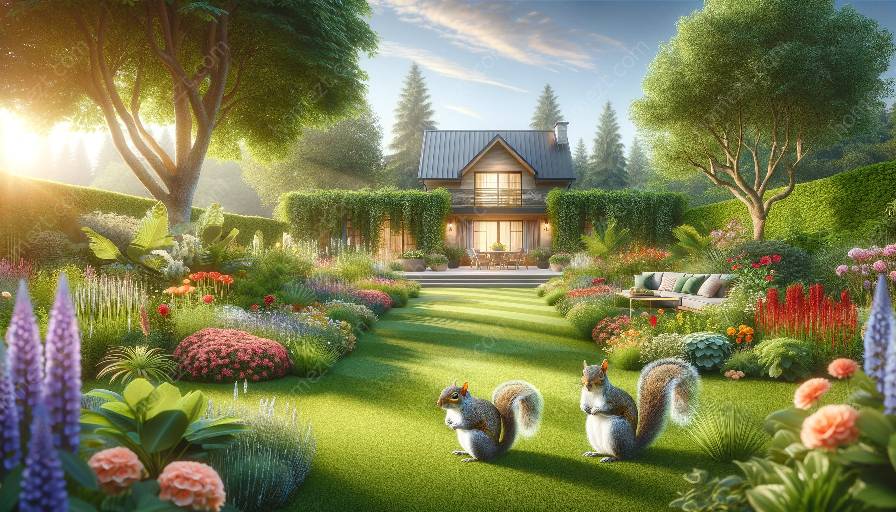Whether you love them or find them to be pests, squirrels are a common sight in many backyards, parks, and urban areas. Understanding their natural habitat and behavior can help you coexist with them and manage their presence in a sustainable way. In this topic cluster, we'll explore squirrel habitat, nesting habits, and how to effectively control them while respecting their place in the ecosystem.
Squirrel Habitat: Natural Environment
Squirrels are adaptable creatures that can inhabit a wide range of environments, including forests, woodlands, urban areas, and suburban neighborhoods. They are known for their acrobatic abilities and are often seen darting across trees, leaping from branch to branch, and foraging for food.
Forests provide a natural habitat for squirrels, offering them an abundance of trees for nesting and ample food sources such as nuts, seeds, and fruits. Squirrels often build dreys, which are made of twigs, leaves, and moss, in the sturdy branches of trees. These nests provide shelter and protection from predators, making the forest a perfect squirrel habitat.
Urban Squirrel Habitats
In urban and suburban areas, squirrels have adapted to human environments and can be found in parks, gardens, and even in attics or crawl spaces of homes. They are attracted to these areas because of the availability of food sources such as bird feeders, fruit trees, and discarded food. Their natural agility and curiosity make them skilled at finding ways to access these resources.
For urban-dwelling squirrels, buildings and attics become their nesting sites, providing shelter and warmth. While squirrels may be considered pests in these areas due to their tendency to damage property and create noise, understanding their habitat needs and behavior can help manage their presence more effectively.
Nesting and Breeding
Squirrels are known for their elaborate nesting behaviors, especially when preparing for breeding. They typically build their nests high in the tree canopy, where they raise their young and stay protected from predators. As solitary creatures, squirrels prefer their own space and may become territorial when it comes to their nesting sites.
During the breeding season, female squirrels seek out secure and warm nesting sites to raise their offspring, making attics and crawl spaces highly attractive to them. Understanding their nesting habits can help homeowners take proactive measures to prevent these intrusions while still respecting the squirrels' need for shelter.
Coexisting with Squirrels
While squirrels can be viewed as pests when they invade human living spaces, there are sustainable and humane ways to manage their presence. By providing squirrel-friendly habitats such as nesting boxes, squirrel feeders, and natural barriers, you can encourage squirrels to stay out of unwanted areas while still allowing them to thrive in suitable environments.
Creating a coexistence plan that respects their natural behaviors and needs can lead to a harmonious balance between humans and squirrels. This involves learning how to discourage squirrels from unwanted areas without causing harm to them or altering their natural habitat in a negative way.
Sustainable Pest Control
When squirrels become a nuisance or pose a threat to property, implementing sustainable pest control methods can help manage their presence effectively. This may include using exclusion techniques to seal entry points, installing deterrents to discourage nesting, and employing humane trapping and relocation methods when necessary.
It's important to work with pest control professionals who are knowledgeable about squirrel behavior and understand the importance of sustainable, eco-friendly practices. By using targeted pest control measures, you can address squirrel issues without causing harm to these fascinating creatures or disrupting their natural habitat.
Conclusion
Squirrel habitat is diverse and can encompass natural forests, urban areas, and suburban neighborhoods. By understanding the nesting habits and behavior of squirrels, we can create coexisting environments that respect their place in the ecosystem while effectively managing their presence in a sustainable way. With the use of squirrel-friendly habitats and sustainable pest control methods, it's possible to strike a balance that benefits both humans and squirrels.


